Salmon en Croute
Servings: 3 People
Ingredients
- 500 g Salmon fillet
- 120 g Spinach
- 50 g Leek
- 75 g Small Prawn
- 1 Egg yolk
- 1 tbsp Butter
- 375 g Puff pastry
- To taste Salt and pepper
For cheese sauce:
- 50 g Cheddar cheese
- 50 ml White wine
- 100 ml Milk
- 1 tbsp Unsalted butter
- 1 tbsp Flour
Instructions
- Add butter to the pan, melt, add leek and fry for about 5 minutes.
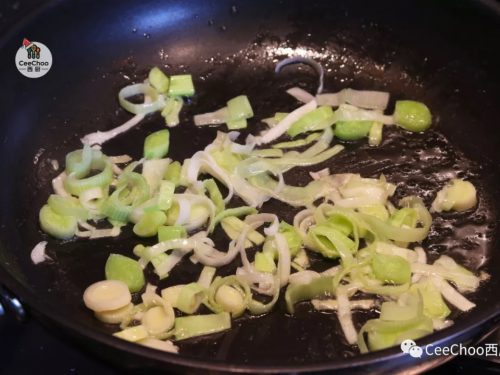
- Add spinach leaves and stir-fry. Season with salt and black pepper. Use a spoon to squeeze as much excess water as possible and remove. Set aside.
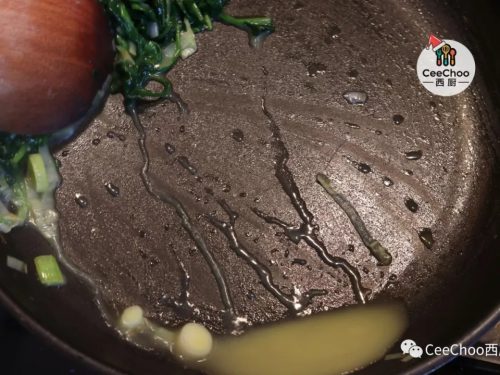
- Making cheese sauce: This sauce is based on French white sauce (Bechemel sauce), so the production techniques that have been shared before (such as the sauce in meat sauce lasagna). It’s the same. Turn on medium-low heat and add 1 tablespoon of butter to the saucepan. Melt the butter and add the flour. Sauté for 1 to 2 minutes until the butter and flour are completely blended to a whitish muddy texture.
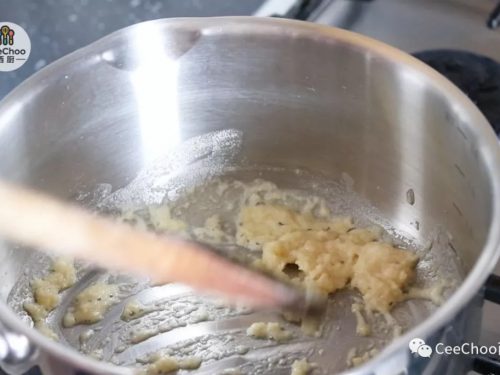
- Keep the medium and low heat and add milk in 3 portions. After each addition, beat vigorously with a whisk until smooth, then continue adding milk. Cook over medium-low heat for 5-7 minutes until thick sauce is obtained. Finally add white wine and grated cheese and cook until the cheese is melted. The final sauce should be very thick.
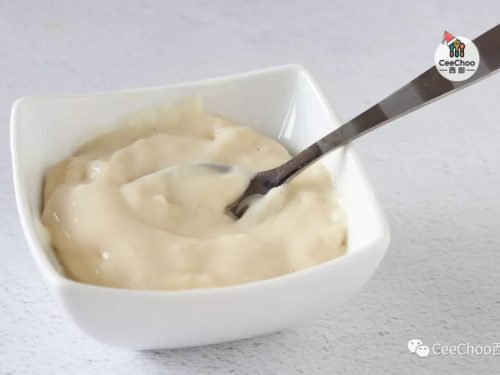
- Start assembly: The salmon (skinless and boneless) - dry moisture from the surface and season both sides with the right amount of salt and pepper (I use white pepper).
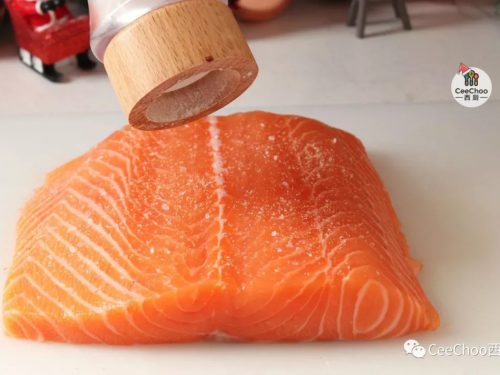
- Spread a layer of spinach and leek evenly on the fish side (not the fish skin side), about 0.5 cm thick.
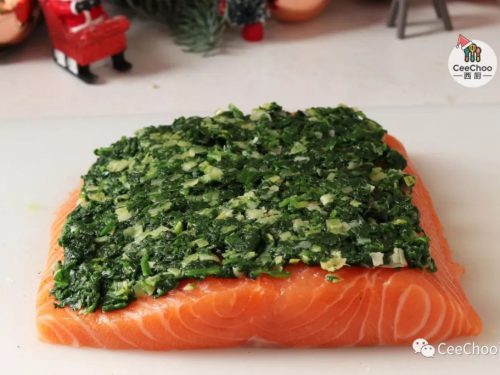
- Spread evenly the spinach layer and cover with prawns.
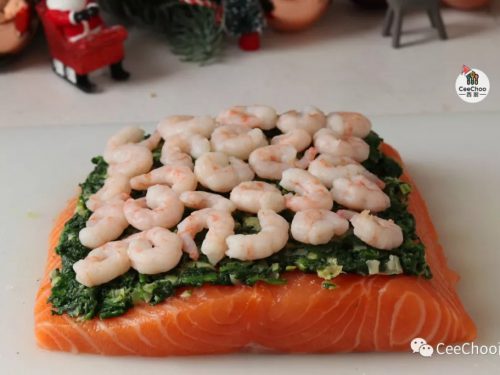
- Finish with a layer of cheese sauce. Use the extra sauce for your enjoyment.
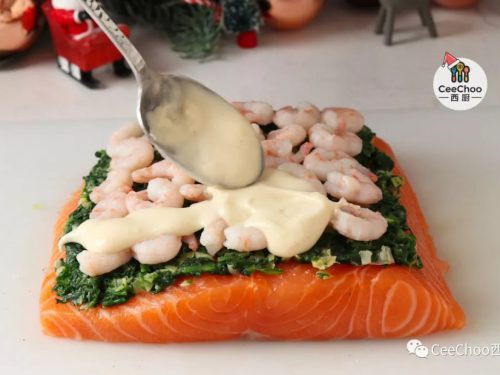
- The pastry is rolled to a thickness of about 3 mm and is at least large enough to completely wrap the salmon. At the same time, preheat the oven to 200C (fan oven) / 220C (conventional oven). Slowly move the salmon to the pastry end (somewhere off the edge). After the egg yolks are beaten, use a brush to apply a layer of egg on the edges.
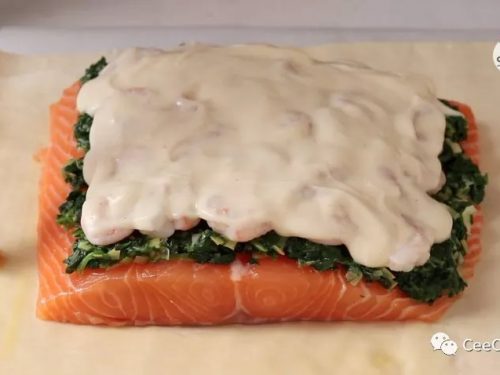
- Turn the pastry over to cover the salmon, and press the edges with your hand to expel the air You can press the end of the knife handle along the edges to make the pastry more adhere to the salmon. Finally, gently press the edge with your hands and cut off the excess pastry.
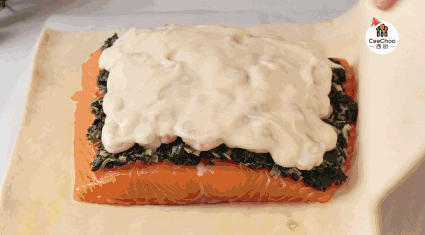
- After wrapping, evenly apply a layer of egg on the surface.
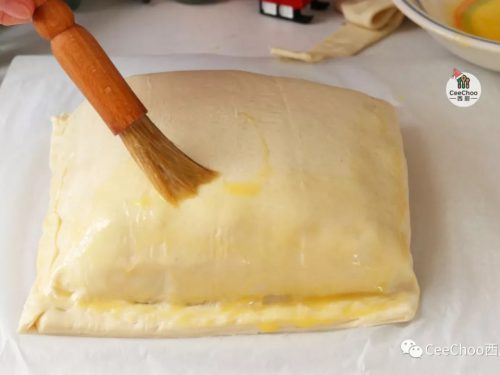
- Top decoration: Take a piece of pastry and roll it into a dough with the same length and width as the top of the salmon, about 2 mm thick. Use a lattice knife to roll from one end of the pastry to the other. Then it is best to use a small knife to ensure that the scratches are completely to the end. Finally, gently pull the lattice out by hand to get a beautiful grid pattern. Note: The pastry is best to refrigerate first to make it a bit firmer, which will make it easier to handle.If you don't have a lattice knife, you can make some decorative patterns yourself.
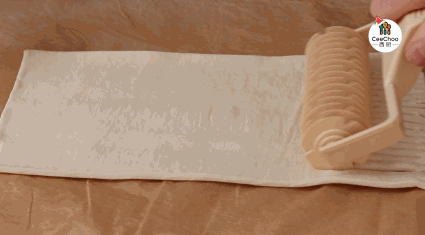
- Press the lattice pastry lightly on the salmon, then brush evenly with a layer of egg.
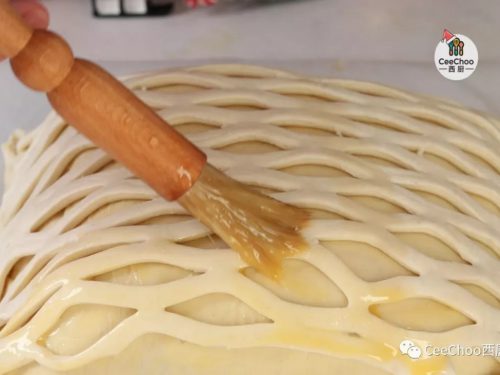
- Bake in the oven (200C) for 25 to 30 minutes (or adjust the cooking time according to the size and thickness of the salmon). If the colour of the pastry becomes too dark and there is a tendency to scorch, it is recommended to cover with a layer of tin foil before continuing to bake .
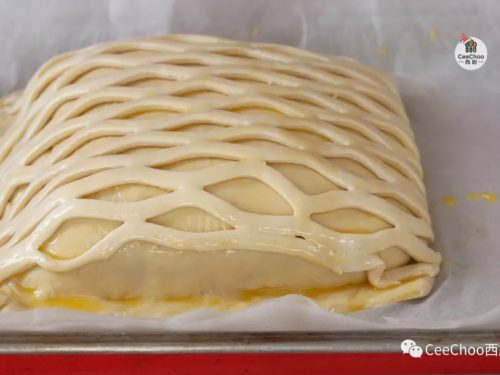
- After baking, let stand for 10 minutes.
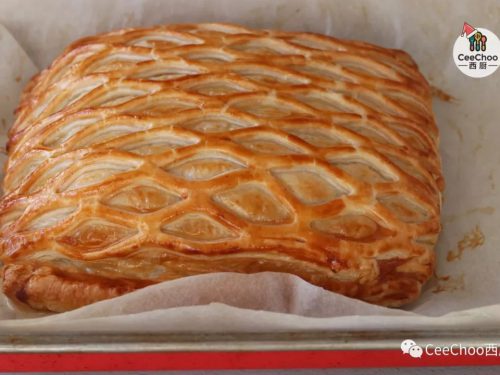
- Cut with a serrated knife and enjoy.
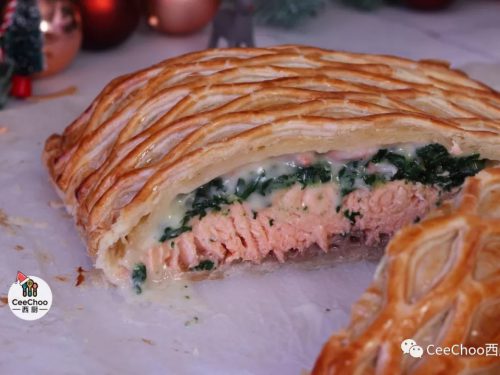
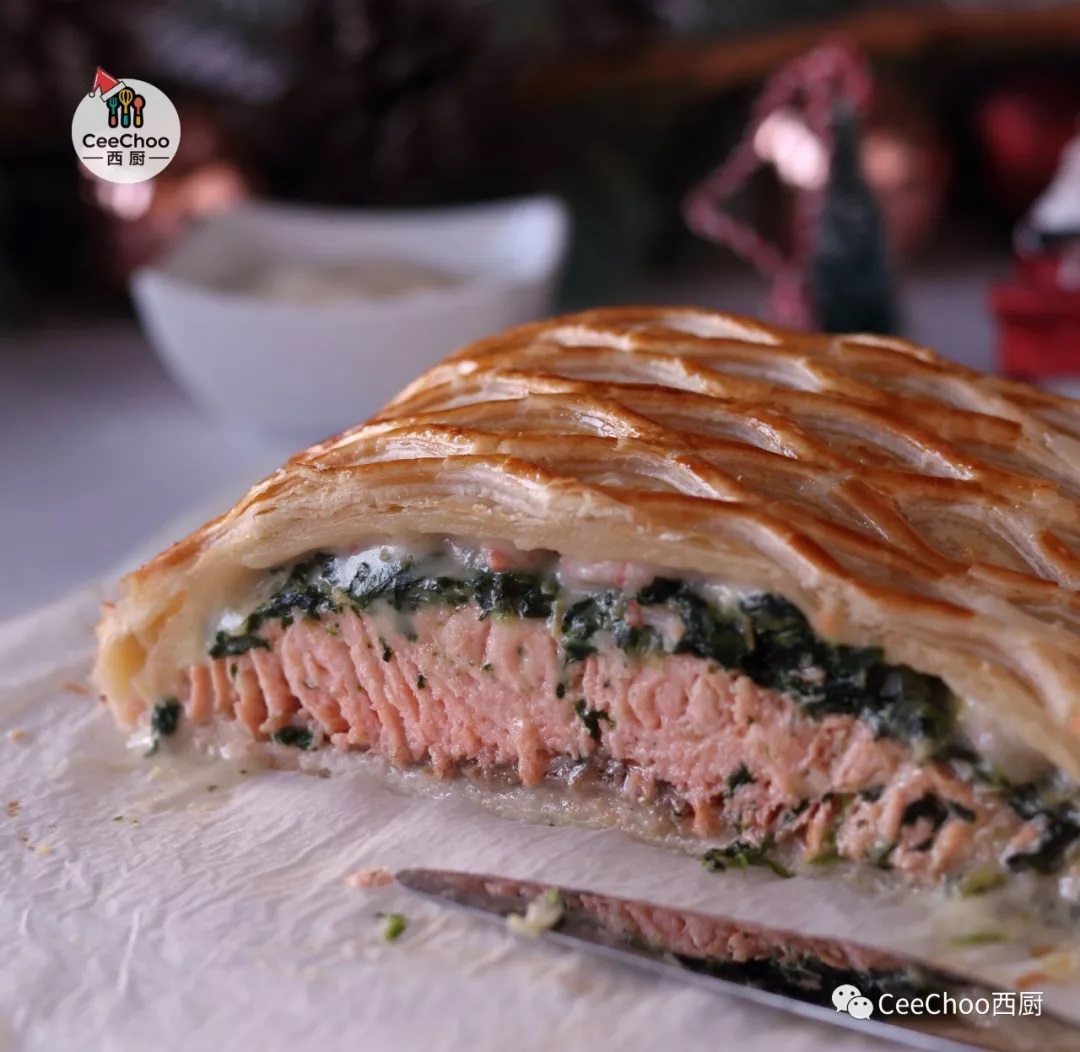
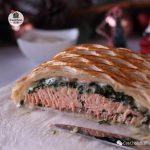
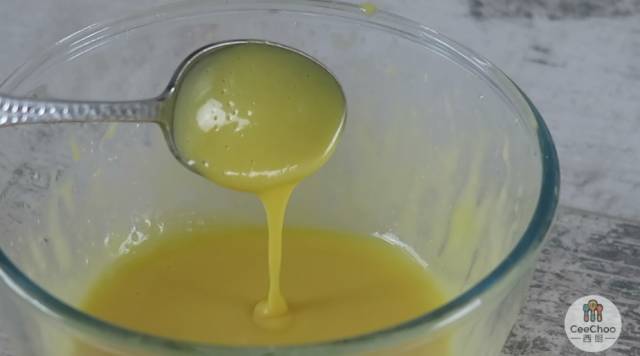
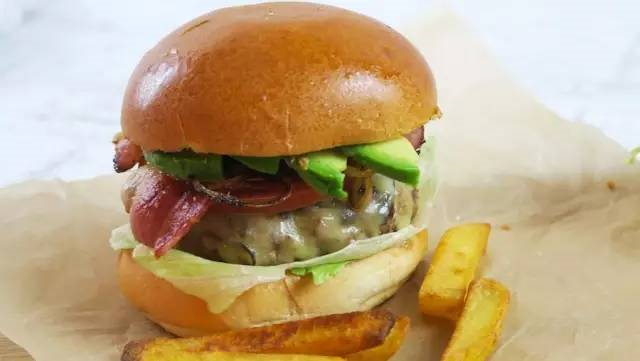


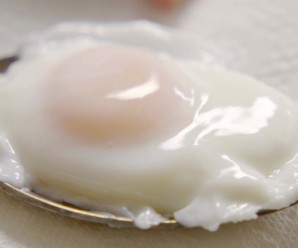
You must be logged in to post a comment.